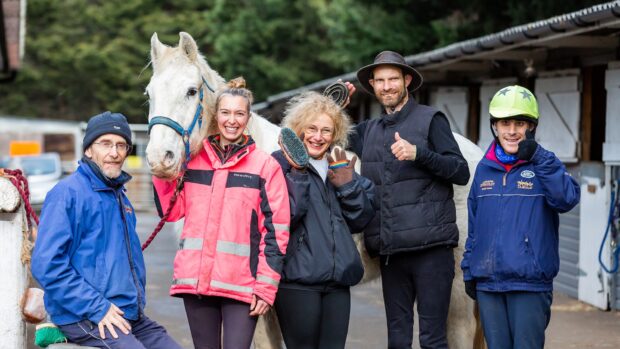Part of the Countryside and Rights of Way Act (CROW 2000) coming into force for public use this week could benefit riders by forcing local authorities to remove obstacles on rights of way.
From 10 March, section 63 of CROW 2000 enables members of the public to serve a formal notice on a highway authority requesting it to remove an obstruction — such as a padlocked gate, wall or fallen tree.
“Both man-made and natural obstructions occur prolifically in many parts of the country and are a major problem for rights of way users,” explains Hannah Cohen, British Horse Society (BHS) access officer. “Removing these obstructions is the responsibility of the highways authority and often the process is a long-drawn-out affair.”
Lawyer Stuart Farr, whose firm, Martineau Johnson, has acted in rights of way disputes, says: “This is a significant improvement on the previous law contained in the Highways Act 1980. While specifying that an authority owed a duty to prevent the obstruction of rights of way, that did not prescribe a remedy for the enforcement of that obligation.
“Too often, landowners deliberately obstruct bridleways passing through their property in an attempt to frustrate and hinder riders.”
However, section 63 is limited by several exclusions, which rule out its use in certain cases. It cannot be used for an order to clear a track where the way obstructed is “seriously disputed” — therefore, where paths are facing upgrades or downgrades, it is ineffective.
Also, no structure can be moved if it is used for human habitation — including tents, caravans or temporary structures. If a bridleway is blocked by a group of travellers, section 63 cannot be used to force them to move.
Hannah Cohen says: “Many landowners, when confronted with a request to remove an obstruction on a bridlepath or other right of way of which they were unaware [or on a bridlepath they assumed was a footpath], apply for an order to downgrade or question its existence. In these cases, section 63 will be ineffective.”
Vicky Allen, BHS access officer for Leicestershire, says that her council takes prompt action when asked to remove an obstacle. But in cases where a right of way is partially obstructed, such as a gate that has electric fencing rigged too close to it, section 63 is unlikely to make a difference.
“Like a lot of CROW 2000, section 63 may not do what it says ‘on the tin’,” she says.
|
||
 |
||


 Get up to 19 issues FREE
Get up to 19 issues FREE TO SUBSCRIBE
TO SUBSCRIBE 


